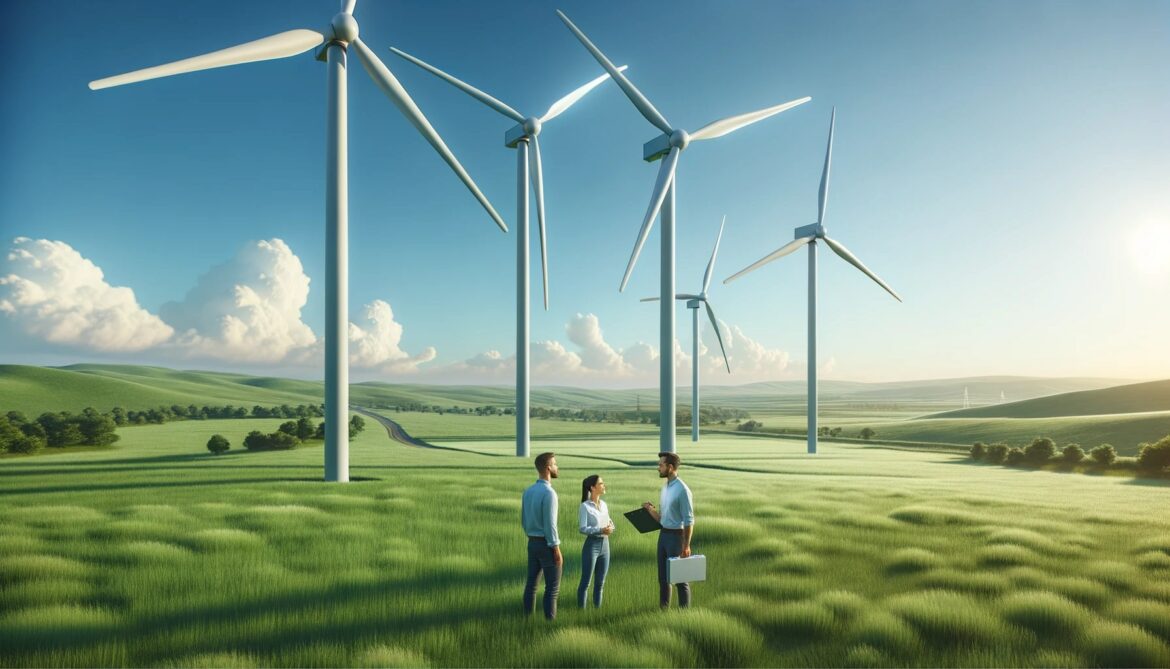Introduction
The future of clean energy is an exciting and rapidly evolving field. With the world’s population growing and the need for sustainable energy sources becoming increasingly important, clean energy is becoming a major focus for governments, businesses, and individuals alike. From solar and wind power to geothermal and hydroelectric energy, the possibilities for clean energy are vast and ever-expanding. In this article, we’ll explore what to expect from the future of clean energy, including the latest developments, potential applications, and the challenges that lie ahead. We’ll also discuss the potential economic and environmental benefits of clean energy and how it can help us create a more sustainable future.
The Impact of Renewable Energy on Climate Change
The Impact of Renewable Energy on Climate Change is undeniable. Renewable energy sources such as solar, wind, and hydropower are becoming increasingly popular as a way to reduce our dependence on fossil fuels and reduce the amount of greenhouse gases released into the atmosphere.
Renewable energy sources are clean, renewable, and sustainable. They do not produce any emissions, and they are not limited in supply. This means that they can be used to generate electricity without contributing to climate change.
The use of renewable energy sources can help reduce the amount of carbon dioxide and other greenhouse gases released into the atmosphere. This is because renewable energy sources do not rely on burning fossil fuels, which release carbon dioxide and other pollutants into the atmosphere.
Renewable energy sources can also help reduce the amount of air pollution caused by burning fossil fuels. This is because renewable energy sources do not produce any emissions, and they are not limited in supply. This means that they can be used to generate electricity without contributing to air pollution.
Renewable energy sources can also help reduce the amount of water pollution caused by burning fossil fuels. This is because renewable energy sources do not require the use of water for cooling, and they do not produce any emissions. This means that they can be used to generate electricity without contributing to water pollution.
Finally, renewable energy sources can help reduce the amount of energy used to generate electricity. This is because renewable energy sources are more efficient than traditional sources of energy, and they can be used to generate electricity without consuming large amounts of energy.
In conclusion, the Impact of Renewable Energy on Climate Change is undeniable. Renewable energy sources are clean, renewable, and sustainable, and they can be used to generate electricity without contributing to climate change. They can also help reduce the amount of air and water pollution caused by burning fossil fuels, and they can help reduce the amount of energy used to generate electricity.
The Role of Governments in Promoting Clean Energy
The role of governments in promoting clean energy is essential to the success of a sustainable energy future. Governments have the power to create incentives and regulations that encourage the development and use of clean energy sources. Governments can also provide funding for research and development of clean energy technologies, as well as provide tax credits and other incentives to businesses and individuals who invest in clean energy.
One of the most important roles of government in promoting clean energy is to create incentives for businesses and individuals to invest in clean energy sources. This can include providing tax credits for businesses that invest in renewable energy sources, such as solar and wind power. Governments can also provide grants and other forms of financial assistance to businesses and individuals who invest in clean energy sources.
In addition to providing incentives, governments can also create regulations that require businesses and individuals to use clean energy sources. For example, governments can require businesses to use renewable energy sources for a certain percentage of their energy needs. Governments can also create regulations that require businesses to reduce their emissions of greenhouse gases.
Governments can also provide funding for research and development of clean energy technologies. This funding can be used to develop new technologies that are more efficient and cost-effective than existing technologies. Governments can also provide funding for research into the environmental impacts of clean energy sources. This research can help governments make informed decisions about the best ways to promote clean energy.
Finally, governments can also provide public education and outreach programs to help people understand the importance of clean energy sources. These programs can help people understand the benefits of clean energy sources, such as reducing air pollution and reducing greenhouse gas emissions. They can also help people understand the potential economic benefits of investing in clean energy sources.
In conclusion, the role of government in promoting clean energy is essential to the success of a sustainable energy future. Governments have the power to create incentives and regulations that encourage the development and use of clean energy sources. They can also provide funding for research and development of clean energy technologies, as well as provide tax credits and other incentives to businesses and individuals who invest in clean energy. Finally, governments can provide public education and outreach programs to help people understand the importance of clean energy sources.
Emerging Clean Energy Technologies
The potential of emerging clean energy technologies is immense. Clean energy technologies are those that produce energy without releasing harmful pollutants into the environment. These technologies are becoming increasingly important as the world seeks to reduce its reliance on fossil fuels and move towards a more sustainable energy future.
Clean energy technologies include solar, wind, geothermal, hydropower, and biomass. Solar energy is the most widely used clean energy technology, and it is becoming increasingly affordable and efficient. Solar panels can be used to generate electricity, and solar thermal systems can be used to heat water and buildings. Wind energy is also becoming increasingly popular, and it can be used to generate electricity. Geothermal energy is generated by tapping into the Earth’s natural heat, and it can be used to heat buildings and generate electricity. Hydropower is generated by using the energy of moving water, and it can be used to generate electricity. Biomass is generated by burning organic materials such as wood, and it can be used to generate electricity and heat buildings.
The potential of these clean energy technologies is immense. They can be used to generate electricity, heat buildings, and power transportation. They can also be used to reduce emissions of greenhouse gases, which are the primary cause of climate change. In addition, clean energy technologies can create jobs and stimulate economic growth.
The development of clean energy technologies is essential for a sustainable energy future. Governments, businesses, and individuals must invest in these technologies in order to reduce emissions and create a more sustainable energy future. The potential of these technologies is immense, and the world must take advantage of them in order to create a more sustainable future.
The Challenges of Integrating Clean Energy into the Grid
Integrating clean energy into the grid is one of the most important challenges facing the energy industry today. As the world moves towards a more sustainable energy future, the need to integrate renewable energy sources into the existing grid infrastructure is becoming increasingly important.
The challenge of integrating clean energy into the grid is twofold. First, there is the technical challenge of integrating the new energy sources into the existing grid infrastructure. This involves ensuring that the new energy sources are compatible with the existing grid, and that they can be safely and reliably integrated into the existing system. This requires a significant amount of planning and coordination between the various stakeholders involved in the energy industry.
The second challenge is the economic challenge of integrating clean energy into the grid. Renewable energy sources are often more expensive than traditional sources of energy, and this can make it difficult for energy companies to make the switch to renewable energy sources. Additionally, the cost of integrating renewable energy sources into the existing grid infrastructure can be prohibitively expensive. This means that energy companies must find ways to make the switch to renewable energy sources more cost-effective.
Finally, there is the challenge of public acceptance. Many people are still skeptical of renewable energy sources, and this can make it difficult for energy companies to convince the public to accept the switch to renewable energy sources. This means that energy companies must find ways to educate the public about the benefits of renewable energy sources and to demonstrate the reliability and safety of these sources.
Integrating clean energy into the grid is a complex and challenging process, but it is essential for the future of the energy industry. By addressing the technical, economic, and public acceptance challenges, energy companies can ensure that the transition to renewable energy sources is successful and sustainable.
The Economic Benefits of Investing in Clean Energy
Investing in clean energy is an important step towards a more sustainable future. Clean energy sources, such as solar, wind, and geothermal, are renewable sources of energy that do not produce harmful emissions or pollutants. Investing in clean energy can have a number of economic benefits, both in the short and long term.
In the short term, investing in clean energy can create jobs and stimulate economic growth. The installation and maintenance of clean energy systems requires a large workforce, which can help to create jobs and boost the local economy. Additionally, the money spent on clean energy systems can be used to purchase materials and services from local businesses, further stimulating the local economy.
In the long term, investing in clean energy can help to reduce energy costs. Clean energy sources are renewable, meaning that they do not require the purchase of fuel or other resources. This can help to reduce energy costs over time, as the cost of fuel and other resources can fluctuate. Additionally, clean energy sources are often more efficient than traditional energy sources, meaning that they can produce more energy with less input. This can further reduce energy costs over time.
Finally, investing in clean energy can help to reduce environmental impacts. Clean energy sources do not produce harmful emissions or pollutants, meaning that they can help to reduce air and water pollution. This can help to improve public health and reduce the costs associated with environmental damage. Additionally, clean energy sources can help to reduce the amount of greenhouse gases released into the atmosphere, helping to mitigate the effects of climate change.
Investing in clean energy can have a number of economic benefits, both in the short and long term. It can create jobs and stimulate economic growth, reduce energy costs, and reduce environmental impacts. For these reasons, investing in clean energy is an important step towards a more sustainable future.
The future of clean energy is bright. Renewable energy sources such as solar, wind, and geothermal are becoming increasingly cost-effective and efficient. Governments are investing in research and development to further reduce the cost of clean energy and increase its availability. We can expect to see more clean energy sources being used in the coming years.

